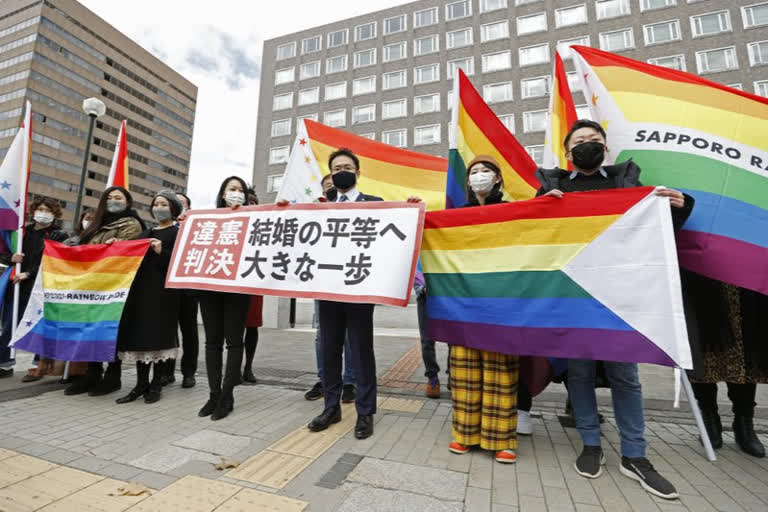Tokyo:A Japanese court for the first time ruled Wednesday that same-sex marriage should be allowed under the country’s constitution, a moral victory that does not have any immediate legal consequence but could bolster efforts for legalization.
The Sapporo District Court said sexuality, like race and gender, is not a matter of individual preference, therefore prohibiting same-sex couples from receiving benefits given to heterosexual couples cannot be justified.
“Legal benefits stemming from marriages should equally benefit both homosexuals and heterosexuals,(asterisk) the court said, according to a copy of the summary of the ruling.
Judge Tomoko Takebe said in the ruling that not allowing same-sex marriages violates Article 14 of the Japanese constitution, which prohibits discrimination “because of race, creed, sex, social status or family origin.”
The court was hearing a case brought by three same-sex couples who were seeking government compensation for the difficulties they had to suffer from not being able to legally marry. The court declined to financially compensate the plaintiffs.
The court’s ruling has no immediate legal effect and same-sex couples are still not allowed to marry. Nevertheless, activists say the ruling is a major victory that could influence similar court cases and help their efforts to push for parliamentary debate and changes to the law to allow same-sex marriage.
Read:US Senator calls for partial boycott of Beijing Olympics over Uyghur 'genocide'
Chief Cabinet Secretary Katsunobu Kato told reporters that the government disagreed with Wednesday’s ruling. He said the government seeks to achieve a society more tolerant to diversity, but did not say how it would respond to the ruling, except that it will watch pending court cases.
Outside the court, the plaintiffs’ lawyers and their supporters held up rainbow flags and a banner saying “a big first step toward equality.”
“I hope this ruling serves as a first step for Japan to change,” said one woman who only identified herself as “Plaintiff No. 5.”
